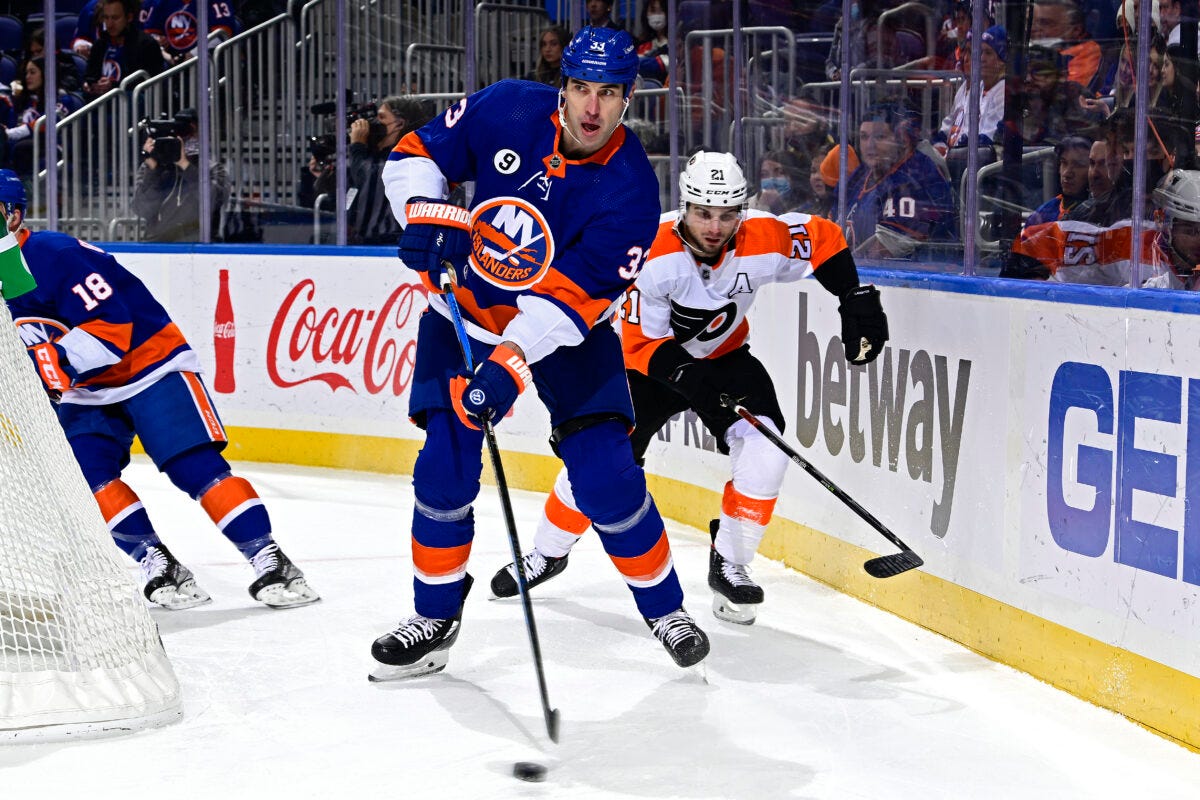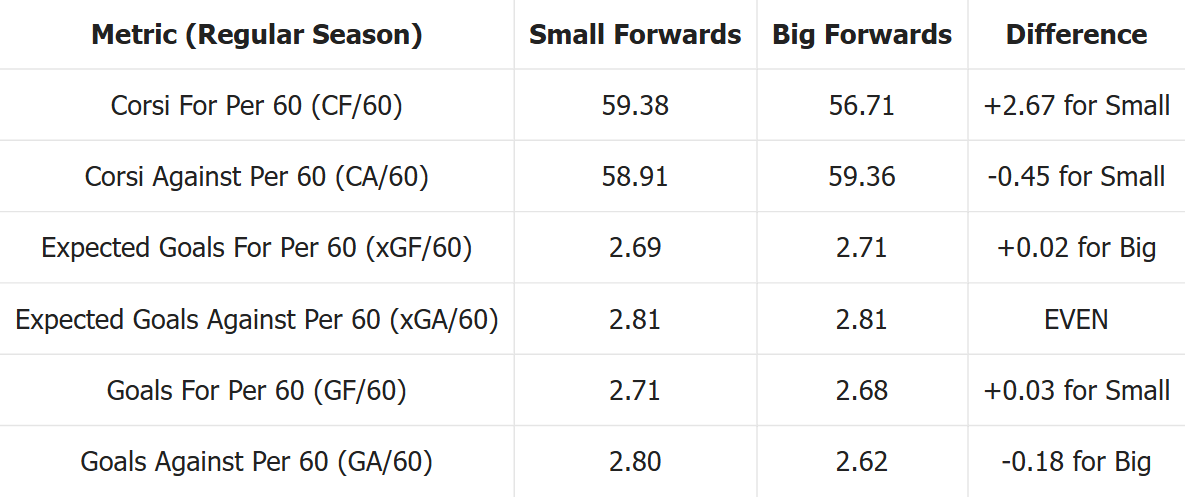Big or Small NHL Forwards...What's the Best Way to Go?
Which group do the analyics favor? Why is that?
We often hear cliches about small and big players alike. One of the more prominent ones is how the small players don’t cut it in the playoffs and the big ones do. Physicality is king, so larger players naturally get it done. But let’s put that to the test. How do they compare in the regular season and the playoffs, both in on-ice metrics and individual ones?
I looked at players 5-foot-9 and shorter (small) and 6-foot-5 and taller (big), using the bottom and top fifth percentile for each. For transparency, a few 6-foot-4 players just barely fell into the top fifth percentile range, but it included such a vast number of athletes that it didn’t seem right to use them all—they were about as plentiful as the 5-foot-9 and lower group alone. I used three-year stats (2022-23 through 2024-25) among players with at least 500 minutes played for the numbers. All data is accurate through Nov. 15.

The small forwards come in at an average of 68.58 inches tall, or about 5-foot-8.5, and 178 pounds. As for the big ones, they’re 77.47 inches tall on average (about 6-foot-5.5) and 223 pounds. That’s a pretty steep gap—are there major differences in their production?
Small vs. Big Forwards: On-Ice Stats Comparison
Let’s look at some on-ice stats and compare them for each side. Though this department tracks their linemates, too, it’s worthwhile to see if there are any differences in how these guys play. Is one group more offensive and the other defensive? Are both more or less identical?
Included are Corsi (another term for shot attempts), expected goals (assigns a likelihood for a shot to go in the net), and actual goals. Below are the numbers, all at even strength:
On-Ice Metrics — Regular Season
The on-ice offense here favors the smaller forwards. Most notably, they are attempting 2.67 more shots per 60 minutes than the bigger ones. Considering the standard ask of a lower-sized forward, this makes sense. They may swarm the opposition like hornets during offensive zone possessions, leading to more shooting attempts for their line (but not necessarily more goals).
When we go away from shot attempts, the numbers slightly favor the bigger forwards. The expected goals are almost exactly the same, so it’s safe to not put too much stock into them.
When we look at actual goals, there’s a slight difference in the conversion rate here. Considering how large the sample is, it’s hard to dismiss the fact that the smaller forwards are higher event than the bigger ones.
This backs the logic test. There’s a higher chance that a small forward is being put on the ice to score, whereas a bigger forward may be called upon to shut down the opposing offense. That becomes more apparent when we look at individual stats, which we’ll get to shortly.
On-Ice Metrics — Playoffs
Keep reading with a 7-day free trial
Subscribe to The Hockey Writers - NHL News, Rumors & Opinion to keep reading this post and get 7 days of free access to the full post archives.



